Today, we’re going to explore summarizing with nonfiction picture books in our Comprehension Reading Strategies series.
The picture book I’ve chosen is one that I used with rising first grader. It’s extremely simple, so summarizing this text was very basic. Please check out our post on teaching kids to summarize using basic signal words if you’d like to see how this same skill works with older learners.
*This post contains affiliate links.
**A free sentence strip page is included at the END of this post. Click on the teal download button to snag your copy. Write in each strip to use it like we did.
What Exactly is Summarizing?
Summarizing is similar to retelling, but it is typically shorter because it only includes the most pertinent information from the story or text. Check out our fiction SCOOP retelling chart or our MUSH nonfiction retelling chart for support in teaching retelling.
Learners need to understand how to retell before they are ready to summarize. They also need to know how to find the main idea of the text so they can include the most important supporting details for that main idea. As you can see, summarizing is a pretty complicated skill here.
Summarizing with Nonfiction Picture Books
One way to teach summarizing to K-2 learners is to start with simple text, like Biggest, Strongest, Fastest by Steve Jenkins.
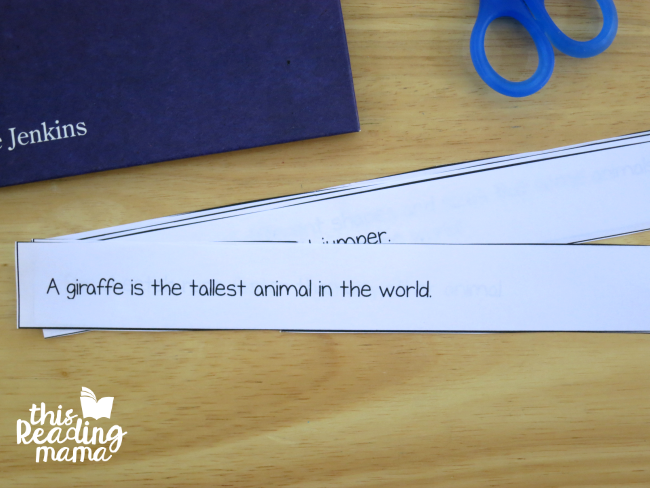
To prepare, I simply typed up the main idea of the text and some supporting details from the story onto strips. I cut them up into strips and mixed them up.
Note: I didn’t include every single animal from the book in our summary strips. I also made them very simple, so she could read them. If I was working with an older learner I could have made them a little longer or more complicated.
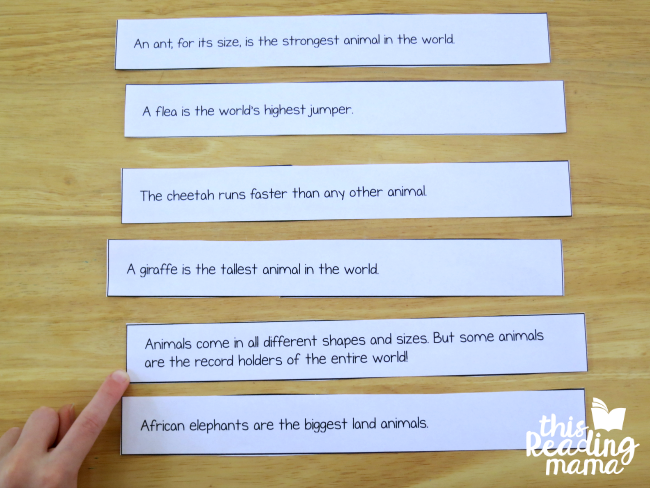
After reading the text, we read each strip. I asked her, “Which one of these tells us what the book is mainly about?” {main idea}
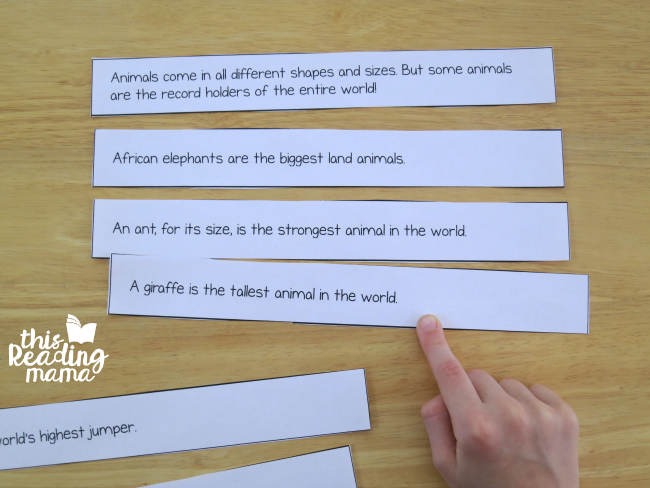
Then, I asked her to put the strips in order of how the animals appear in the book under the main idea.
After we read through all the strips, I said, “What we have here is a summary of Biggest, Strongest, Fastest. The first strip tells what the text is mainly about. Then we tell a detail about some of the animals that are record holders on all these strips.
“But we’re missing something at the of our summary. We need a sentence that finishes our summary. A sentence that kind of tells what the story is mostly about again, but in different words than what we have at the beginning.”
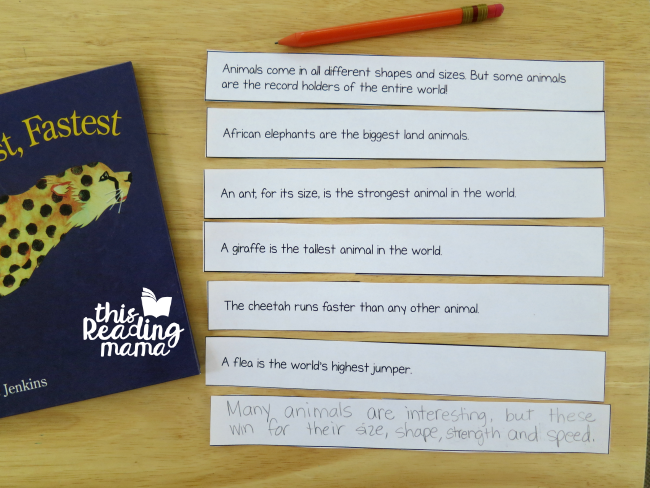
Together {really, it was about 15% her and 85% me}, we came up with a concluding sentence. This is another difficult skill because learners need to understand how to paraphrase to make their concluding sentence differ from their opening sentence(s).
Once the concluding sentence was complete, we had a simple summary!
Simple Ways to Differentiate This Activity:
- Of course, the book you choose for various learners can be easier or more difficult.
- Write the sentences while learners put them in the correct order {like you see in this post}.
- Write the sentences that learners dictate to you.
- Share the writing.
- Ask learners to try it on their own after you’ve modeled the practiced the skill together.
Find all the posts in our Teaching Comprehension Reading Strategies with Picture Books series!
Enjoy teaching!
~Becky
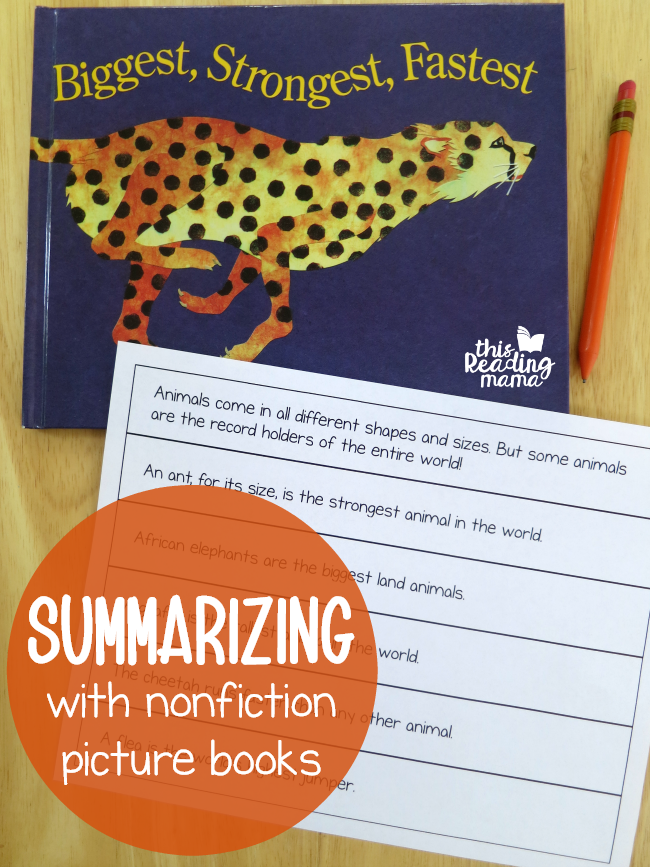
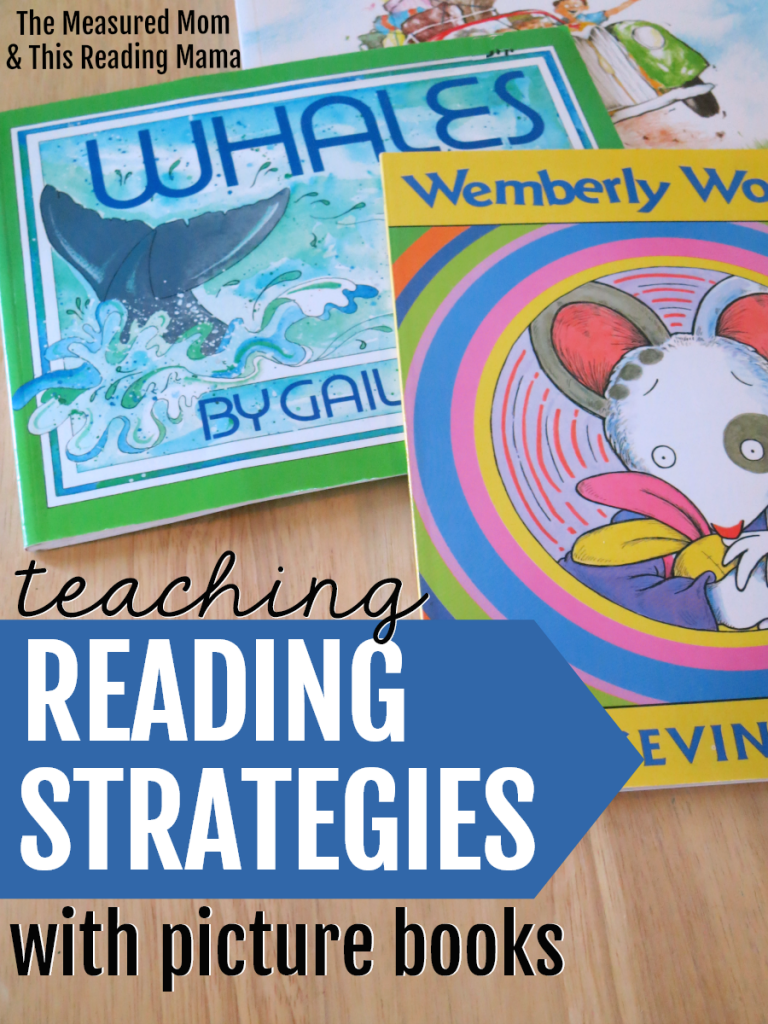


Looks Great very excited to use children’s picture books to help teach these skills. Thanks